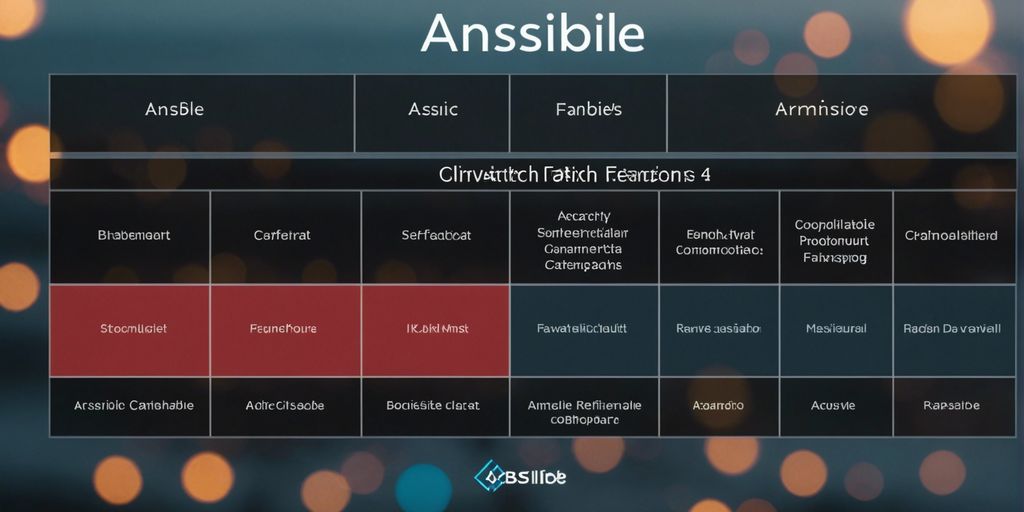In the realm of IT automation and configuration management, choosing the ideal tool often depends on specific project requirements and individual preferences.
Two popular choices are Ansible and Fabric, each offering unique features and capabilities. While there are certain overlaps in functionality, understanding their distinct strengths can significantly enhance productivity. So, what can Ansible do that Fabric cannot?
This article explores various aspects where Ansible excels, enabling more sophisticated and large-scale automation tasks compared to Fabric. By examining these differences, readers can make informed decisions regarding which tool best suits their needs. Focus Keywords: Ansible, Fabric, IT automation, configuration management, unique features.
Key Takeaways
- Ansible provides powerful orchestration features, allowing users to define and execute complex workflows involving multiple systems, which Fabric does not.
- Ansible’s focus on declarative configuration management allows for more extensive and complex infrastructure modeling compared to Fabric’s imperative approach.
- Ansible is versatile and can be used for managing various types of infrastructure, including servers, networks, and cloud resources, whereas Fabric is more focused on remote command execution and task automation.
- Ansible pushes modules to remote machines and executes them, providing a richer set of features and complexity compared to Fabric’s simpler command-line execution over SSH.
- Ansible’s broader range of use cases and extensive orchestration capabilities make it suitable for a wider range of automation scenarios compared to Fabric.
Automating Configuration Management

Managing Multiple Servers
When you have an cloud based infrastructure and deal, with deployments of very similar services on similar servers having a way to automate the setup and upkeep of everything is incredibly helpful. Ansible, a configuration management tool developed in Python is an automation tool that relies on the SSH protocol for its operations.
Automating Software Installation
Tools for deployment management and configuration are essential, for this purpose. They allow you to use recipes, playbooks, templates or other methods to streamline automation and coordination across your environment for a deployment.
Ensuring Uniformity
Configuration tools let you utilize recipes, playbooks, templates or any preferred method to simplify automation and coordination across your environment for a deployment. This guarantees that all servers are set up in the manner minimizing the chances of inconsistencies and mistakes.
Infrastructure Orchestration
Managing Cloud Resources
Ansible is great, at handling cloud resources as it offers modules for cloud providers such as AWS, Azure and Google Cloud. This makes it simple to integrate and manage cloud infrastructure smoothly.
Using Ansible you can automate the setup, configuration and maintenance of cloud resources to keep your infrastructure current and aligned with your needs.
Automating Network Configuration
Setting up network configurations can be tricky and prone to mistakes. Ansible simplifies this by allowing you to describe your network setups in code.
This method ensures uniformity. Lowers the chances of errors made by humans. With its orchestration capabilities Ansible empowers you to oversee and automate network devices from manufacturers making it a versatile tool for network administrators.
Scaling Infrastructure
Adjusting infrastructure according to demand is essential, for sustaining performance and dependability. Ansible streamlines the process of scaling your infrastructure by automating the deployment of servers and services.
Whether you’re expanding to handle increased traffic or reducing size to cut expenses Ansibles automation features guarantee that your infrastructure can adapt promptly and effectively.
When your infrastructure is decentralized and cloud-based, and you’re dealing with frequent deployments of largely identical services across largely identical servers, having a way to automate the configuration and maintenance of everything is a large boon.
Application Deployment
Deploying applications, across environments can present a challenge. Ansible simplifies this task. By creating playbooks with Ansible you can outline the steps for deploying your application and ensure consistency in the deployment process each time.
This becomes especially valuable in cloud based infrastructures enabling deployments across multiple servers.
Reverting back deployments is a standout feature of Ansible. In case of deployment issues you have the capability to easily return to a state, which’s critical, for maintaining the stability of your production environment.
Ansibles playbooks can be configured to include rollback procedures facilitating reversals of changes if needed.
Managing dependencies is another suit of Ansible. When deploying applications it’s crucial to guarantee that all essential packages and software are correctly installed on the target servers.
With Ansible you can specify these dependencies in your playbooks to ensure their installation during deployment eliminating interventions and minimizing error risks.
Working in production today often means continuous deployments and an environment distributed all over the world. When your infrastructure is decentralized and cloud-based and you’re dealing with frequent deployments of largely identical services across largely identical servers, having a way to automate the configuration and maintenance of everything is a large boon.
Security Compliance Automation
Ensuring System Compliance
Ansible is great, at ensuring system compliance by automating the enforcement of security policies on servers. This simplifies the task of managing compliance. Guarantees that all systems comply with the necessary standards. Ansibles agentless design makes it simpler to execute and sustain compliance checks without requiring software on the target machines.
Automating Security Updates
It’s essential to keep systems current with the security patches to uphold an environment. Ansible can automate the application of security updates making sure that all systems are promptly patched. This not saves time. Also minimizes the risk of vulnerabilities being exploited.
Implementing Access Controls
By using organizations can automate access control policies to ensure that authorized users have access to specific resources. This is particularly critical, in environments handling data. Through automated access controls organizations can maintain enforcement of their security policies across all systems.
Automating security compliance tasks with Ansible not only enhances security but also frees up valuable time for IT teams to focus on more strategic initiatives.
Monitoring and Reporting
Collecting System Metrics
Ansible excels at collecting system metrics across multiple servers, providing a comprehensive view of your infrastructure’s health. With the NVUE CLI, you configure, monitor, and manage the Cumulus Linux network elements. This allows for real-time monitoring and quick identification of potential issues.
Generating Performance Reports
Ansible can automate the generation of performance reports, ensuring that you have up-to-date information on your systems’ performance. This is crucial for maintaining optimal performance and planning for future capacity needs.
Alerting and Notification
Ansible’s alerting and notification capabilities ensure that you are immediately informed of any issues that arise. This allows for quick response times and minimizes downtime.
Ansible’s robust monitoring and reporting features make it an invaluable tool for maintaining the health and performance of your infrastructure.
Wrapping Up On “What can Ansible do that Fabric cannot?”
We have seen What can Ansible do that Fabric cannot?
In conclusion, while both Ansible and Fabric serve as powerful automation tools for managing IT infrastructure, they cater to different needs and use cases. Ansible stands out with its robust capabilities in automating configuration management, orchestrating complex infrastructures, deploying applications, ensuring security compliance, and monitoring systems. Its declarative approach and extensive feature set make it suitable for a wide range of automation scenarios, from managing multiple servers to scaling cloud resources. On the other hand, Fabric excels in simplicity and speed, making it ideal for quick remote command execution and task automation. Ultimately, the choice between Ansible and Fabric depends on the specific requirements and preferences of the user, with Ansible offering a more comprehensive solution for complex and large-scale environments.
External links

